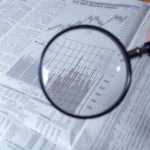 Wall Street witnessed another week of volatile trading though US stock indexes made weekly gains on Friday and the S&P 500 Index closed at its highest level since June 2008 after consumer confidence and home sales reports topped expectations.
Wall Street witnessed another week of volatile trading though US stock indexes made weekly gains on Friday and the S&P 500 Index closed at its highest level since June 2008 after consumer confidence and home sales reports topped expectations.
The earnings season is drawing to a close and markets next week will probably be more macro-economic news driven. So far this week, domestic economic indicators have been by-and-large positive, helping offset concerns on Iran’s nuclear program and rising oil prices with crude futures for April delivery closing at $109.77 a barrel on Friday, the highest since May last.
The market volatility is likely to continue next week with possible positive economic developments and concern over the impact on consumer spending from rising energy prices driving the index movements.
The Dow Jones Industrial Average (DJIA) closed at 12,982.95, up 0.3 percent on the week, while the S&P 500 climbed to 1,365.74, a gain of 0.3 percent from last week’s finish. The NASDAQ Composite ended the week at 2963.75, a weekly gain of 0.4 percent.
Data released by Thomson Reuters show 63 percent of the companies among the 461 S&P 500 firms that have declared Q4 results so far, have managed to beat the (already lowered) street expectations on earnings.
The Group of 20 nations is scheduled to meet in Mexico City over the weekend before Wall Street resumes with quarterly results next week. Europe’s sovereign debt crisis is likely to feature in the meeting with demand for more money from the IMF expected to be high on the agenda.
The jury, however, is still out on the impact of Europe on the US markets going forward. Some analysts believe the EU has effectively put a safety net around Greece to avoid another Lehman Event. Others believe that US markets will keenly observe European developments, especially on Wednesday when the European Central Bank rolls out next round of Long Term Refinance Option (LTRO), the extended three-year loan facility. The ECB’s aggressive monetary policy has helped the market stabilize a lot, they argue.
In the ETF space next week, investors, advisors and the mutual fund industry will be looking forward to the ETF version launch of the PIMCO Total Return Fund on March 1. According to the prospectus, the ETF will have an expense ratio of 0.55 percent, compared with 0.46 percent for the institutional class of shareholders for the $250 billion PIMCO Total Return Fund.
After silver prices hit a five-month high of $35.70 an ounce on Friday, a gain of seven percent on the week, silver ETFs breached the 200-day simple moving average to reach its highest level in five months. Silver (SLV) has outperformed gold (GLD) and other precious metals so far this year.
Disclosure: Holdings in GLD
Contact Ulli